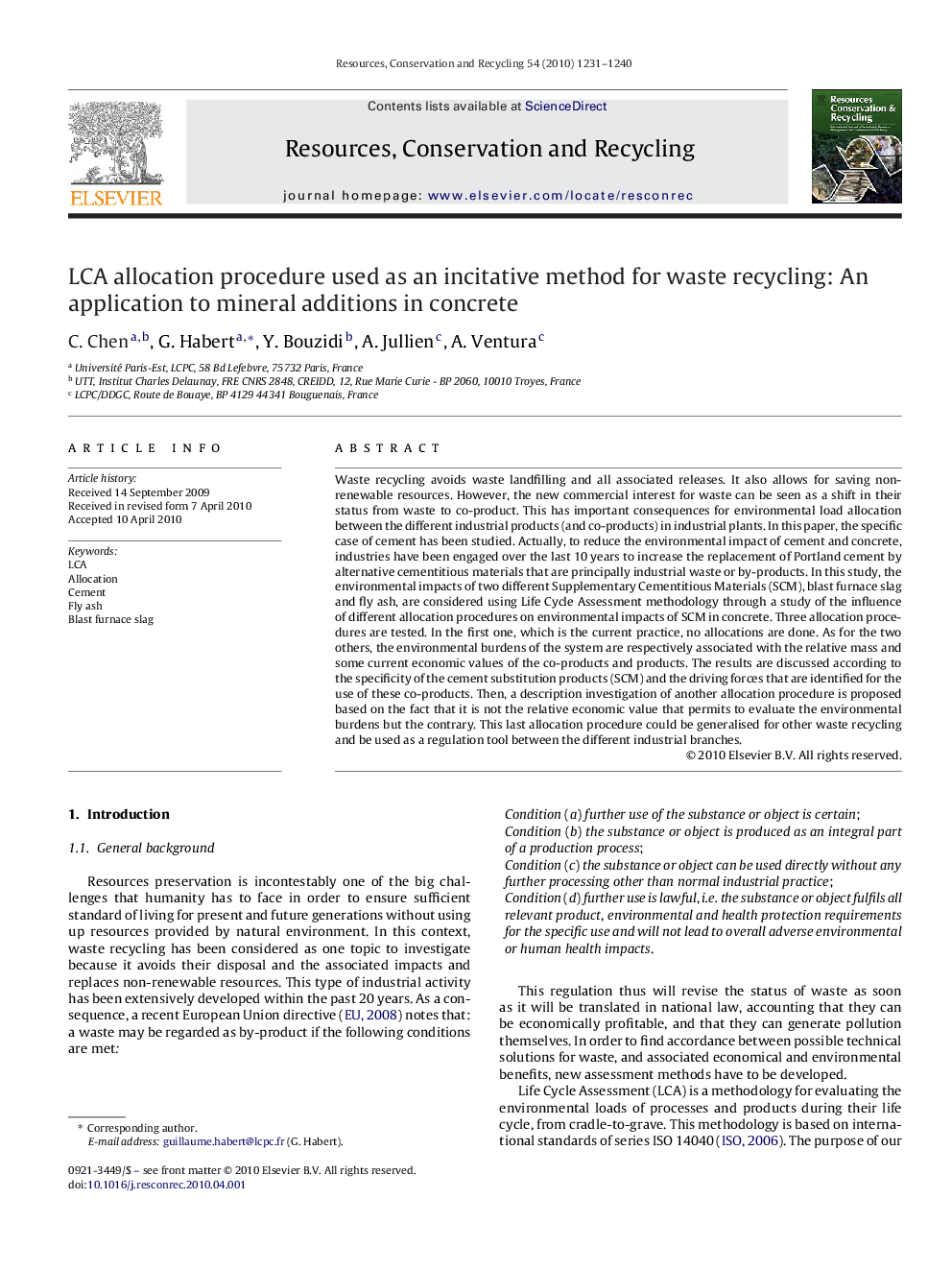| Article ID | Journal | Published Year | Pages | File Type |
|---|---|---|---|---|
| 1063810 | Resources, Conservation and Recycling | 2010 | 10 Pages |
Waste recycling avoids waste landfilling and all associated releases. It also allows for saving non-renewable resources. However, the new commercial interest for waste can be seen as a shift in their status from waste to co-product. This has important consequences for environmental load allocation between the different industrial products (and co-products) in industrial plants. In this paper, the specific case of cement has been studied. Actually, to reduce the environmental impact of cement and concrete, industries have been engaged over the last 10 years to increase the replacement of Portland cement by alternative cementitious materials that are principally industrial waste or by-products. In this study, the environmental impacts of two different Supplementary Cementitious Materials (SCM), blast furnace slag and fly ash, are considered using Life Cycle Assessment methodology through a study of the influence of different allocation procedures on environmental impacts of SCM in concrete. Three allocation procedures are tested. In the first one, which is the current practice, no allocations are done. As for the two others, the environmental burdens of the system are respectively associated with the relative mass and some current economic values of the co-products and products. The results are discussed according to the specificity of the cement substitution products (SCM) and the driving forces that are identified for the use of these co-products. Then, a description investigation of another allocation procedure is proposed based on the fact that it is not the relative economic value that permits to evaluate the environmental burdens but the contrary. This last allocation procedure could be generalised for other waste recycling and be used as a regulation tool between the different industrial branches.
